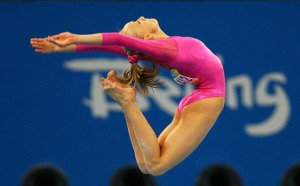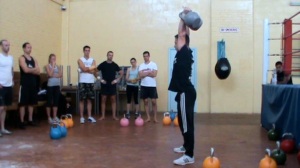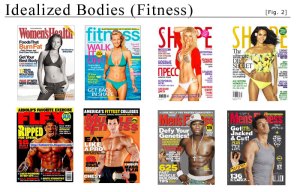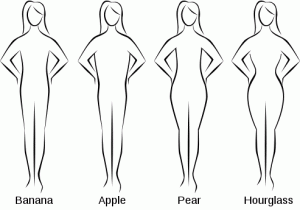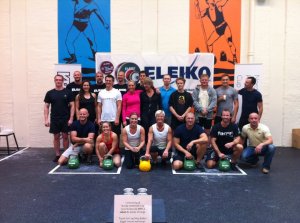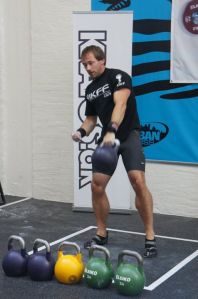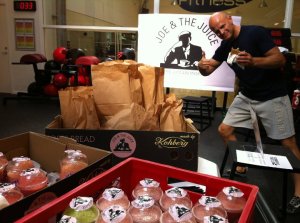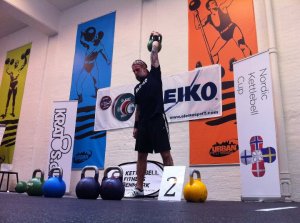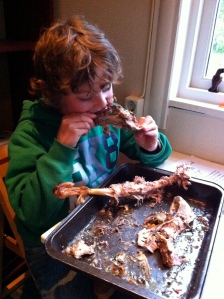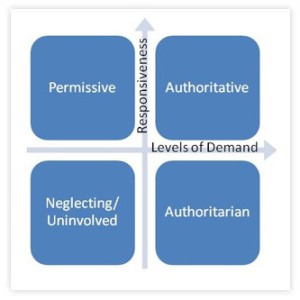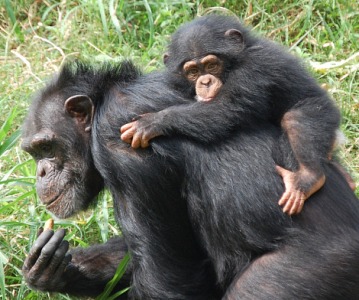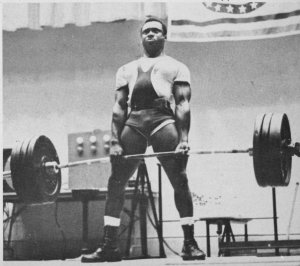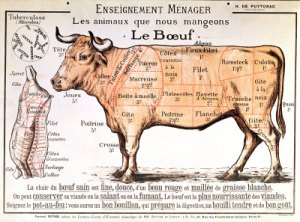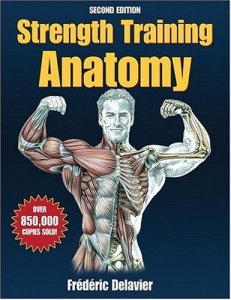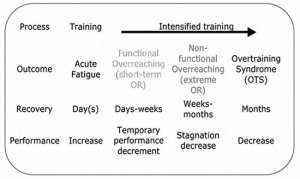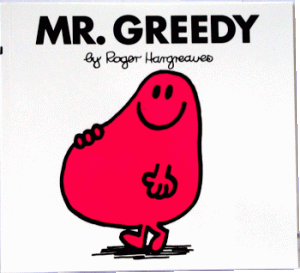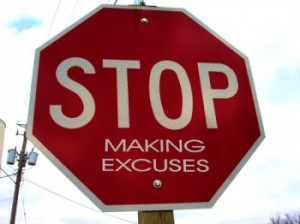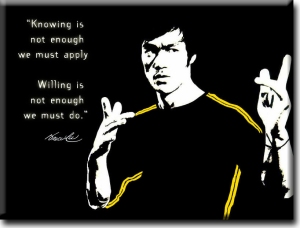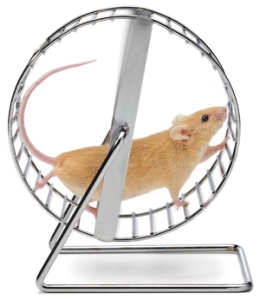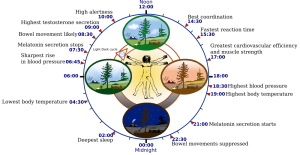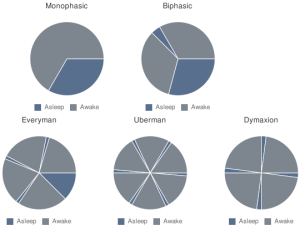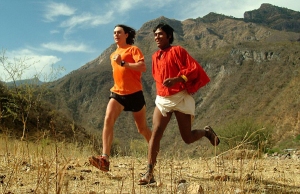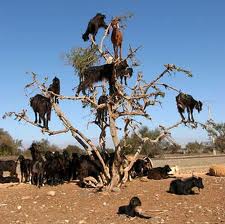Movement nutrition: you get good at what you do, and what you don’t do
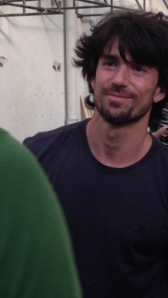 Human evolution has, and will always be, about movement. Evolution requires complexity, and complexity requires movement. Those that don’t move, tend not to evolve as well. They shit the bed. Avoiding the approach of the poop-man, we were constantly reminded, requires nurturing the freedom providing our amazing capacity to move well. Few people however, seek to move, both figuratively and literally, outside their limited zones of comfort. Ido Portal is certainly an exception. Having spent the past years travelling far and wide seeking out knowledge from some of the world’s leading trainers, in order to improve my own game as both an athlete and teacher, the chance to work under the guidance of Portal and his assistants was one I had long awaited.
Human evolution has, and will always be, about movement. Evolution requires complexity, and complexity requires movement. Those that don’t move, tend not to evolve as well. They shit the bed. Avoiding the approach of the poop-man, we were constantly reminded, requires nurturing the freedom providing our amazing capacity to move well. Few people however, seek to move, both figuratively and literally, outside their limited zones of comfort. Ido Portal is certainly an exception. Having spent the past years travelling far and wide seeking out knowledge from some of the world’s leading trainers, in order to improve my own game as both an athlete and teacher, the chance to work under the guidance of Portal and his assistants was one I had long awaited.
In short, Ido Portal has devoted his life to exploring movement. With a background in traditional martial arts, he moved about trying to find teachers of movement, but only came across specialists, who, despite imparting knowledge, failed to solve the myriad of elements that comprise movement education – scientific, nutritional, artistic, mental, biomechanical and so on. Portal now travels the world expanding upon a culture of movement. Some short clips of the complexities explored can be found here. I joined a group in Copenhagen who, in Portal’s words, were interested in this “bigger picture”.
Joined by his 2 pupils John Sapinoso and Odelia Goldschmidt, an eager group of mainly athletes, teachers, coaches and therapists experienced first-hand the ‘Ido Portal Method’. This post won’t detail this method, but will provide an insight into the philosophy of movement. We were reminded at the start, that the weekend would provide more questions than answers. I’ve gone away from courses with this feeling before, but not in the sense Portal meant. His teachings were complex, but this is a guy who has spent his entire adult life researching, and practicing, the intricacies of human movement. Being able to perform a strict one-arm chin up is not in any sense ‘easy’. His methods were challenging, but only in the respect that he never once led anyone to believe that beautiful capacities of strength and graceful movement came without years of hard work. Processes were broken down, from the preparation of joints, to the basic building blocks of hanging and pulling, to moving on all fours – in order to convey the process and complexity of movement freedom, and, if performing a one-arm chin/handstand, of bodily super strength. Throughout the demanding series of practical segments, Portal oozed his passion for perfecting form and not allowing us to move on too fast.
A large part of the weekend was as much a lesson is how to dig deep physically to unleash the creativity and complexity of the human body through natural movement patterns, yet I found myself intrigued by the philosophical insights provided into the way freedom might be approached in these hypermodern times. A slight interlude first. I’ve spent much of the past year reading the contrasting works of Nietzsche, Schopenhauer and Kierkegaard alongside the more contemporary neorealist approaches espoused by Sloterdijk and Latour. Part of this deeper introspection has to do with long-standing questions relating to the reevaluation and questioning of the meaning and purposes of ‘being human’. Whilst travelling to Copenhagen for the course, I was reading Thus Spoke Zarathustra, my alternative to a Lonely Planet city guide. This masterpiece, however challenging it is to read, is a vision of what we all have within us to define, create, and become the masters of our own existence. Through a highly metaphorical and parabolic style, Nietzsche asks why an encroaching spirit of nihilism has led the world into a state of crisis, an emptying of human meaning, purpose and essential value? The ‘free spirit’ or the Übermensch is a vision of overcoming the passive nature of an unreflective humanity – decomposing (as today) in a blur of YouTube, androgyny and high fructose corn syrup. This free spirit, and will to cross the bridges retaining the anthropos in this hot-tub of sugar-laced apathy, need not dwell in the mind but ought to resonate within the physical being.
For most philosophers, and indeed I must delegate this lack of motion to fellow anthropologists, the investigation into (post) humanism, past and present, has lacked any sense of an active, performative oomph. But, perhaps my diligent return to German thought (a mere aside I thought from the French poststructuralist hold upon my weary reading eyes of recent years) was meant to direct me to Peter Sloterdijk. Very briefly, this brilliant mind, in all his roguishness (Socrates was right – ‘wisdom-roughlook’ – ‘cheese&ham’) sees this transcendence of man Nietzsche prophetically called for, as taking place through training, work, physicality and performance. In other words, practice becomes the ‘athleticism of the incredible’ a repetition of exercises that shape a world in which we take responsibility for self-actualizing our potentials and freedoms, away from the temptations to continue to base life on a Facebook ‘like’ or a belly full of frozen spam (and the $19.99 solution). My reading may have a slight bias, but essentially, philosophers who remind us that we are products of what we do, and don’t do, are welcome downloads to this movers’ library.
Step up Ido Portal.
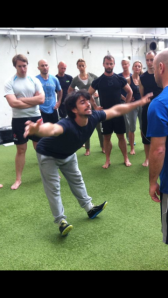 Marketing yourself as a proponent of ‘movement culture’ takes some follow up. Not like one who espouses his/her skills as a specialist (Yoga, Zumba, aqua-jogging, Nordic walking etc). Portal had clearly gone beyond the ‘course handbook, monthly newsletter and periodic group class’ mandate of many of today’s ‘trainers’ in the world of ‘fitness’. In fact, the detail and variety of insight into the body he provided, was beyond what I had expected. Again, I’m not sure some trainers dumb down their schpeel for ease of flow, or out of pure necessity. I found the anatomy and physiology detail extremely useful, not only in a practical sense, but in the way cognitive processes rely on various ques that one may or may not be aware of. I for one, like to know what’s happening (or not) with my body beyond feeling ‘ok’ or ‘crap’ and small details to concentrate on when standing upside down, or up on the rings are crucial to the process of mastering certain movements. Many fallacies were put to the test, in straightforward, no bullshit ways. Ideas about stretching, nutrition, deloading, programming, safety, intensity to name but a few were presented in ways that I’m sure the majority of the participants wouldn’t have come across before. I certainly found it refreshing to hear a coach talking about the resilience and creativity of both the body and mind, in regards to injuries, complexity and intelligence. Anecdotes were given from athletes and trainers to accentuate ideas, refute others. I appreciated hearing, as an undercurrent to most of the instruction, that it was our own responsibility to find out what works for us as individuals, as opposed to the constant ‘one size fits all’ approach commonly force fed in the boxed-in commercially-driven ‘fitness world’. These ideas were for people who wanted to train, not exercise. I’m just glad nobody asked the fateful question relating to ‘but is it still ok if we eat shit and don’t train much on weekends’? I can only imagine what the response would have been.
Marketing yourself as a proponent of ‘movement culture’ takes some follow up. Not like one who espouses his/her skills as a specialist (Yoga, Zumba, aqua-jogging, Nordic walking etc). Portal had clearly gone beyond the ‘course handbook, monthly newsletter and periodic group class’ mandate of many of today’s ‘trainers’ in the world of ‘fitness’. In fact, the detail and variety of insight into the body he provided, was beyond what I had expected. Again, I’m not sure some trainers dumb down their schpeel for ease of flow, or out of pure necessity. I found the anatomy and physiology detail extremely useful, not only in a practical sense, but in the way cognitive processes rely on various ques that one may or may not be aware of. I for one, like to know what’s happening (or not) with my body beyond feeling ‘ok’ or ‘crap’ and small details to concentrate on when standing upside down, or up on the rings are crucial to the process of mastering certain movements. Many fallacies were put to the test, in straightforward, no bullshit ways. Ideas about stretching, nutrition, deloading, programming, safety, intensity to name but a few were presented in ways that I’m sure the majority of the participants wouldn’t have come across before. I certainly found it refreshing to hear a coach talking about the resilience and creativity of both the body and mind, in regards to injuries, complexity and intelligence. Anecdotes were given from athletes and trainers to accentuate ideas, refute others. I appreciated hearing, as an undercurrent to most of the instruction, that it was our own responsibility to find out what works for us as individuals, as opposed to the constant ‘one size fits all’ approach commonly force fed in the boxed-in commercially-driven ‘fitness world’. These ideas were for people who wanted to train, not exercise. I’m just glad nobody asked the fateful question relating to ‘but is it still ok if we eat shit and don’t train much on weekends’? I can only imagine what the response would have been.
For those who have followed Portal on the interweb over the years, you can’t help but notice the air of confidence/arrogance in the way he responds to (mostly) cyberwarrior comments and questions. This could just be an Israeli thing I thought. On the contrary, I found Portal affable, humorous and fully geared to imparting understanding built up over years of research and practice. To justify the fees and the almost ‘exclusivity’ of his services would require this, but like few others I’ve had the pleasure to work with (Steve Cotter immediately springs to mind) the level of professionalism and the take-out for me personally entirely justifies Portal as being someone you ought to seek out if you’re interested in the ‘bigger picture’ relating to movement. Like a number of the philosophers, stretching as far back at the Stoics through the Renaissance, the revolutionary 19th century, Enlightenment’s secularism and through to the critics of modernity today, Ido Portal seeks to confront the fear of possible freedom, and the instinct for growth, independence and durability. His movement culture, or ‘method’ may be seen as a new realm of physical perspectivism, one seeking to overcome the limits of dualistic thought between the mind and body. We may not all have the desire to move as beautifully as the human is capable of, or even reflect upon the destructive forces of inactivity and acquiescence to external forces. Yet, the perspective Portal gives is based upon movement, and the creativity and joy it can bring. The world is knowable, but conditional to certain interests – if we can place movement at the forefront of a new set of values for the human being, then Portal, like Nietzsche and his prophet Zarathustra before him, will have played his part in the creation of what we might become.
